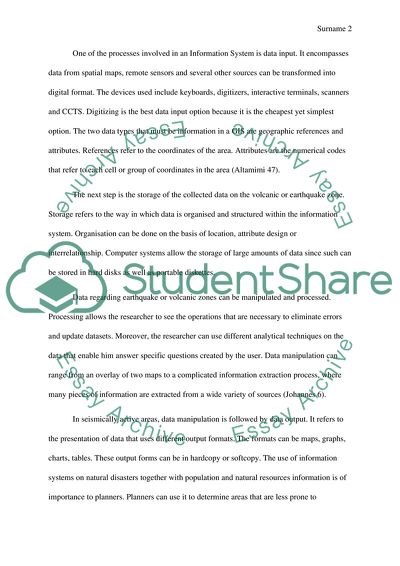Cite this document
(Relation of Information Systems to Earthquakes and Volcanoes Essay Example | Topics and Well Written Essays - 1250 words, n.d.)
Relation of Information Systems to Earthquakes and Volcanoes Essay Example | Topics and Well Written Essays - 1250 words. https://studentshare.org/information-technology/1826399-how-information-system-technology-relate-to-earthquakes-and-volcanoes-earth-science
Relation of Information Systems to Earthquakes and Volcanoes Essay Example | Topics and Well Written Essays - 1250 words. https://studentshare.org/information-technology/1826399-how-information-system-technology-relate-to-earthquakes-and-volcanoes-earth-science
(Relation of Information Systems to Earthquakes and Volcanoes Essay Example | Topics and Well Written Essays - 1250 Words)
Relation of Information Systems to Earthquakes and Volcanoes Essay Example | Topics and Well Written Essays - 1250 Words. https://studentshare.org/information-technology/1826399-how-information-system-technology-relate-to-earthquakes-and-volcanoes-earth-science.
Relation of Information Systems to Earthquakes and Volcanoes Essay Example | Topics and Well Written Essays - 1250 Words. https://studentshare.org/information-technology/1826399-how-information-system-technology-relate-to-earthquakes-and-volcanoes-earth-science.
“Relation of Information Systems to Earthquakes and Volcanoes Essay Example | Topics and Well Written Essays - 1250 Words”. https://studentshare.org/information-technology/1826399-how-information-system-technology-relate-to-earthquakes-and-volcanoes-earth-science.


